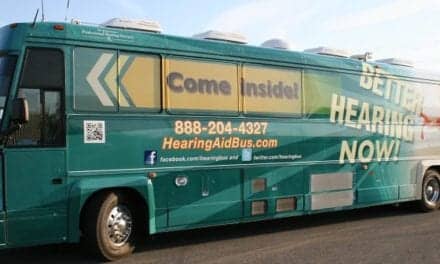Data from two nationally representative surveys indicates that the prevalence of hearing loss among US adolescents increased by about 30% from 1988-1994 to 2005-2006, with one in five adolescents having hearing loss in 2005-2006, according to a study in the August 18 issue of JAMA, the journal of the American Medical Association.
Hearing loss is a common sensory disorder, affecting tens of millions of individuals of all ages in the United States. Adolescent hearing loss, although common, is not well understood, and can have important educational and social implications, according to background information in the article. Some risk factors, such as loud sound exposure from listening to music, may be of particular importance to adolescents.
Josef Shargorodsky, MD, MPH, of Brigham and Women’s Hospital, Boston, and colleagues examined two comparable databases to evaluate whether there has been a change in the prevalence of hearing loss and to assess characteristics of hearing impairment in the 12-to 19-year-old age group.
The databases were the Third National Health and Nutrition Examination Survey (NHANES III), 1988-1994, and NHANES 2005-2006. NHANES III examined 2,928 participants and NHANES 2005-2006 examined 1,771 participants, ages 12 to 19 years. Audiometrically determined hearing loss was categorized as either unilateral or bilateral for low frequency (0.5,1, and 2 kilohertz [kHz]) or high frequency (3,4,6, and 8 kHz), and as slight loss (greater than 15 to less than 25 decibels [dB]) or mild or greater loss (25 dB or greater) according to hearing sensitivity in the worse ear.
An analysis of the data indicated that the prevalence of any hearing loss among 12- to 19-year olds was 14.9% in 1988-1994 and 19.5% (approximately 6.5 million individuals) in 2005-2006, representing a 31% increase in the prevalence of hearing loss over this time.
The majority of hearing loss was slight. The prevalence of any unilateral hearing loss was 11.1% in 1988-1994 and 14.0% in 2005-2006, and any bilateral hearing loss was 3.8% and 5.5%, respectively. Any high-frequency hearing loss (prevalence, 12.8% in 1988-1994; prevalence, 16.4% in 2005-2006) was more common than any low-frequency hearing loss (prevalence, 6.1% in 1988-1994; prevalence, 9.0% in 2005-2006) in both survey cycles.
The prevalence of mild or worse hearing loss was significantly higher in NHANES 2005-2006 than in the 1988-1994 cycle, representing a 77% increase. Females were significantly less likely than males to demonstrate any hearing loss in 2005-2006. Histories of three or more ear infections, firearm use, and loud noise exposure for 5 or more hours in a week were not significantly associated with any hearing loss in 2005-2006. Individuals from families below the federal poverty threshold had significantly higher odds of hearing loss than those above the threshold.
"The prevalence of hearing loss among a sample of US adolescents aged 12 to 19 years was greater in 2005-2006 compared with 1988-1994. Further studies are needed to determine reasons for this increase and to identify potential modifiable risk factors to prevent the development of hearing loss," the authors conclude.
Print media outlets nationwide have latched on to this issue, covering it in their news and editorial colums. The TODAY show on NBC picked up the story, with its chief medical editor Nancy Snyderman, MD, discussing the risks of iPods and other personal music devices on teens’ hearing. The broadcast noted new studies that suggest nearly 20% percent of young people have some level of hearing loss, and cited statistics that 5.2 million adolescents have hearing loss linked to noise exposure, and that more than half of high school students say they have at least one symptom of hearing loss.
Over the years, HR has published articles by Brian Fligor, ScD, on this important topic: click here to read "Recreational Noise and Its Potential Risk to Hearing," and click here to read “Portable” Music and Its Risk to Hearing Health."
[Source: Eureka Alert on behalf of JAMA]




